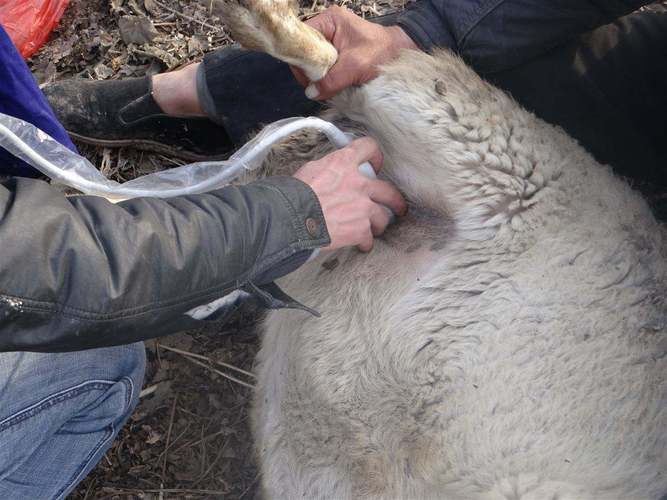The most direct and rapid method for inducing estrus in ewes is hormone treatment, usually mainly using gonadotropins, progesterone, estrogen, prostaglandins, etc. In addition, there are neural stimuli such as environmental climate change, weaning, and heterosexual stimulation. Among neural stimuli, heterosexual stimulation produces the most significant effects. When sheep are observed by B-ultrasound, significant changes can be seen in the follicles.

Most sheep breeds induce estrus once a year, and there is a long period of estrus after giving birth. If estrus induction is performed during the estrus period, the interval between lambing can be shortened, allowing ewes to give birth to three lambs in two years. Using progesterone preparations, treat for 14 days, and inject PMSG 500-1000 international units intramuscularly on the day of discontinuation. After about 30 hours, follicle formation can be observed on sheep ultrasound, indicating the onset of estrus.
A few weeks before the onset of estrus season in ewes, placing rams into the ewe herd (ram effect) will stimulate the ewes to quickly end their estrus period. The use of the "ram effect" can almost advance the seasonal estrus of sheep and goat breeds by 6 weeks. When sheep are measured by ultrasound, it can be found that the number of estrus ewes will also increase.
The induction of estrus in sheep can also be achieved by creating an artificial climate environment. Under temperate conditions, the estrus season of sheep begins when the daylight hours begin to shorten. Spring and summer are the non estrus seasons for ewes. During this period, artificial control of light and temperature, imitating the light time and temperature in autumn, can induce ewes to estrus through observation with B-ultrasound.







